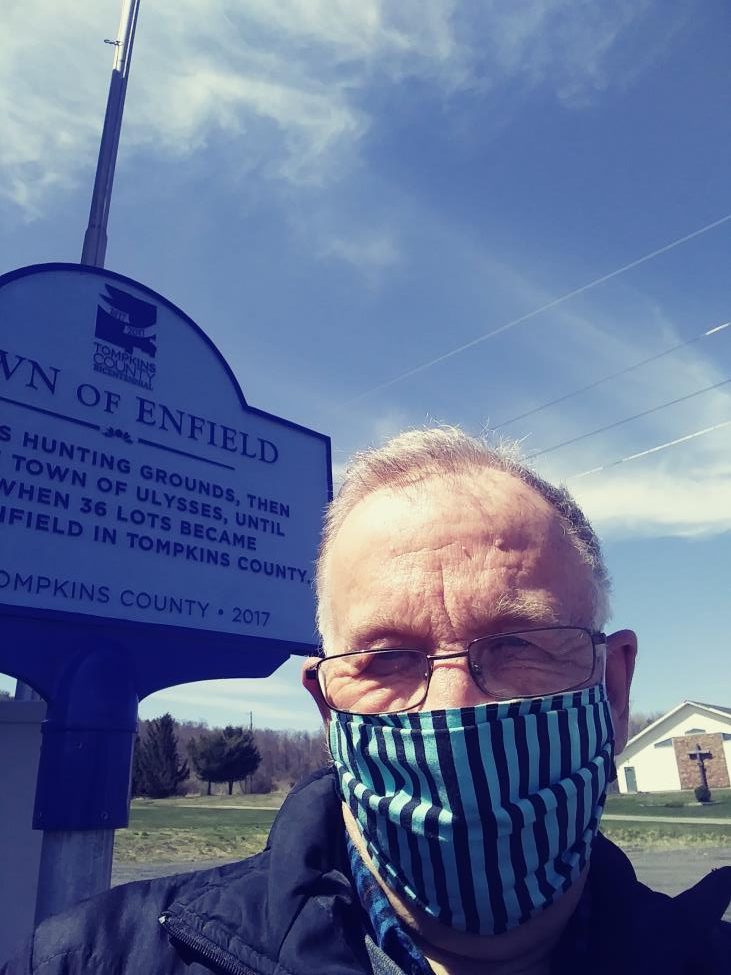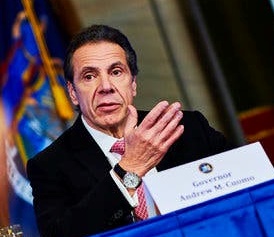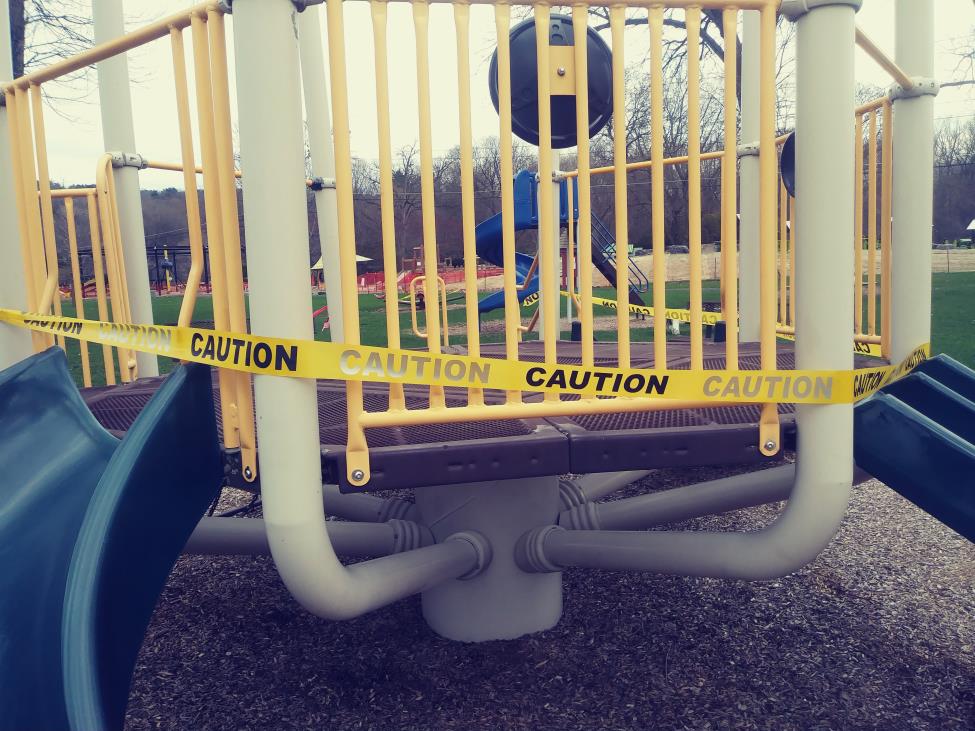Democracy and Us on the Other Side of COVID-19
April 20, 2020
“In the meantime, what do we do today? …. I’m going to issue an executive order that says all people in public must have a mask or nose covering — mouth and nose covering, and they must wear it in a situation where you cannot, or are not maintaining social distancing….
“You’re right to go out for a walk in the park, go out for a walk because you need to get out of the house, the dog is getting on your nerves. Fine, don’t infect me. You don’t have a right to infect me. If you are going to be in a situation in public where you may come into contact with other people in a situation that is not socially distanced, you must have a mask or a cloth covering nose and mouth. That is by executive order.”
New York Governor Andrew Cuomo Daily News Conference. April 15, 2020

Promptly at Eight P.M., Friday, April 17th, the hammer fell. Governor Cuomo and the medical bureaucracy that he proudly, imperiously commands imposed the “mask-up” order affecting every private citizen in the Empire State. We employ 213 State Senators and Assembly members to make our laws. Nary a peep—and certainly never a vote—from any of them.
Of course, we must obey, unless and until a challenge succeeds. But to state the obvious—and I’m glad to state it—Cuomo’s mask-up order is the most personally-invasive dictate yet. First, he closed the restaurants. Then he banned “non-essential gatherings… of any size for any reason.” Now, sick or well, whenever you or I go out in public and cannot be absolutely sure that we will not invade that magical six-foot personal space of anyone else, we’d better be wearing a cloth face mask or the full force of Albany’s police power will fall upon us.
“It’s nice to know we live under a dictatorship,” I blurted out upon first learning of this latest governmental overreach, informed by a colleague at Enfield’s Town Board meeting Wednesday night, the 15th. A response too strong? You decide. I’m a libertarian at heart. It’s one thing for Albany’s bureaucracy to put its invasive hand ever deeper into my pocket. But when the nanny-state thrusts that same palm over my nostrils and teeth, I’ve got an issue. Yes, you can quote me again: “It’s nice to know we live under a dictatorship!”
And no, I have not yet seen Andrew Cuomo wearing his mask.
The national and local economic collapse precipitated by COVID-19 has magnified food insecurity in Enfield. For the past three weekends, I have volunteered, and will continue to volunteer, boxing grocery orders at the Enfield Food Pantry. It’s surprisingly tedious work, yet necessary. Last Saturday, a new twist. A few days before the Governor masked us all, he ordered most service workers, including us at the Food Pantry, to wear masks at all times.
I reported for duty. My cloth mask awaited. I put the standard-issue garment over my nose and mouth, worked dutifully for three-and-a-half hours and felt oxygen deprived at all times. I grew light-headed, fatigued, cranky. At least twice I had to exit the Pantry, pull the mask down and gasp for air. Even after returning home, I felt odd. That confounded mask, mandated by a bureaucracy, inflicted on me more harm that afternoon than it might ever benefit the public at large. Let’s not exaggerate. I did not need a ventilator. But a nasal cannula would have helped. And that one experience provided the launching pad for what I’ll now write.
First, let’s get our terminology straight. It’ been left undefined by so many of late. Confusion abounds. When it comes to COVID-19 patients, there are the symptomatic, the pre-symptomatic, and the asymptomatic. And just so you know, I’ll draw upon the World Health Organization (WHO) for my definitions, not InfoWars or some comparable conspiracy-hawking blog.
The WHO describes a symptomatic case as someone “who has developed signs and symptoms compatible with COVID-19.” He’s sick and shows it. We all agree he should be tested, quarantined, and monitored. And if he ever passes near others—please let his neighbor buy the groceries—he should wear a mask, a really good one.
But it’s the pre-symptomatic and asymptomatic distinction few explain. The pre-symptomatic are those, says WHO, that lack COVID-19 symptoms now, but will later develop them. By contrast the asymptomatic is a person whose infection is confirmed by laboratory tests but who never develops symptoms. If never tested, she may never know.
But here’s where panic must yield to reason. WHO Situation Report 73, published April 2nd, states that the “pre-symptomatic” patient from the point of infection is likely to develop COVID-19 symptoms within an average five-to-seven days, though sometimes much longer, maybe two weeks after infection. The asymptomatic, of course, never get sick. And the WHO discerns a difference in transmission between the two groups.
During the “pre-symptomatic” period, says WHO, “some infected persons can be contagious. Therefore, transmission from a pre-symptomatic case can occur before symptom onset.”
With the asymptomatic, however, the WHO remains cautious. The exact words from Situation Report 73:
“There are few reports of laboratory-confirmed cases who are truly asymptomatic, and to date, there has been no documented asymptomatic transmission. This does not exclude the possibility that it may occur. Asymptomatic cases have been reported as part of contact tracing efforts in some countries” (My emphasis).
So, in lay language, COVID-19 transmission by the never-symptomatic is possible, yet never documented. Remember that.
Also keep in mind one thing more. Medical authorities concur that your cloth masks does little to protect you from someone else’s COVID-19. Rather, it protects others from the germs you, the unwitting pre-symptomatic patient, might scatter about.

Politicians like Andrew Cuomo listen to scientists. But scientists live in a unique analytical world, one governed by the test tube and the scientific method. Hypothesize, experiment, observe and record. Then recommend a solution to those with the power to compel. Scientists’ world is their laboratory. They seldom gaze out the window.
I’ve found scientists to be absolutists, seeking perfection to a fault. If one pill cures 50 per cent of the patients, but two pills cures 95 per cent, with no medical side-effects, better prescribe the two-pill regimen. Never mind that each pill will cost the patient half his life savings.
As I write this, COVID-19 has put 22 million Americans out of work; not because of the disease, but because of politicians’ reaction to it. Perhaps the marginal saving of lives is worth the sacrifice. But to those of us who question the experts’ calculus, please do not insinuate that we propose “Granny die” for the sake of our wealth and convenience. We only ask that reason control the debate.
Judges, unlike scientists, labor not with the petri dish, but rather the balance scale. They weigh alternatives. “The touchstone is reasonableness” jurists often say. Absolutes remain few. The interests of Peter must be counterpoised against those of Paul. Plaintiffs’ rights; defendants’ duty. I suggest we apply similar judicial reasoning to COVID-19.
As of April 20th, the Tompkins County’s Health Department has recorded 123 positive-testing COVID-19 patients locally since it detected its first case March 14th. Only 29 people remain actively carrying the disease. The rest have recovered. A half-dozen remain hospitalized. No local person has died. These statistics in a county of 102,000. So about one-tenth of one per cent of us have contracted the disease. (Please, don’t go down a rabbit hole and talk about students who’ve left for home.)
As long as we practice intelligent social distancing, are extreme protective measures really warranted in view of the statistical risk? Doesn’t reason-based balance make more sense than absolutist dogma?
In a conference call with municipal leaders—including this writer—April 16th, Tompkins County Public Health Director Frank Kruppa reiterated the County’s chosen theme of the moment. “My message today is please just stay home.” And Kruppa unabashedly extended his plea to urging us to not even patronize take-out restaurants, or those places that deliver entrees to the curb. A week earlier, his similarly cautious recommendation had closed the playgrounds.

“We have accepted” asymptomatic transmission, stated the Health Director in words far less measured than those the WHO uses. You see, scientists, including public health administrators, think in absolutes. They seek perfection, not just to flatten the curve, but of reduce the infection rate to zero. They attempt the near impossible
But as one close confidante cautioned me, the take-out business is about all that’s keeping local restaurants alive. When coronavirus ends, and someday it will, do we still want Panera Bread to be there? Or the Ithaca Bakery? Taste of Thai? Jimmy John’s? Coltivare? The scientists and the power-grabbing politicians whose ear they’ve caught, willingly subordinate long-term commercial vitality—not to mention your personal rights—to clinical perfection. It’s their mission; their mindset.
To me, the rule of reason, not arbitrariness, should prevail. Employ common sense. In COVID-19 hot spots like New York City, maybe we should err on caution’s side. Maybe deep in the heart of Gotham, everyone should be masked given the increased probability that anyone you meet on the street—or in a store—could be a carrier; not just asymptomatic, but pre-symptomatic, a documented ticking time bomb of contagion.
But in Ithaca, Enfield, Tompkins County, where only a tenth of one per cent have tested positive? To me, the balance scales tip toward liberty, toward loosening up the rules a bit. Let’s continue to social distance. Let’s still sacrifice; forego Cornell Commencement, the Ithaca Festival, and Grassroots this year. But can’t we maybe have well-separated tables at Moosewood? Shop for spring clothes at Kohl’s? Climb the Cass Park turtle again? I suggest inviting a judge to sit at the epidemiologist’s side, keeping her company—and focused.
Just my suggestion. And sorry, Governor Cuomo. From now until Food Pantry duty, I’ll maintain my six feet of separation and leave that pesky little striped (suffocating) mask tucked in my pocket.
Happy breathing.
Bob

